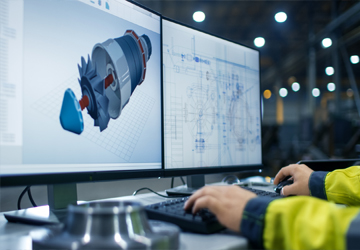- Get link
- X
- Other Apps
Innovation, Speed, and Low cost are the most important criteria in developing a product in the present world. The three factors have been a challenge for decades and are still a challenge for any product development.
Simulation (CAE) has been able to address the challenge of innovation and cost to an extent for the past 40 years. In 2020, with the advancement in Semiconductor technology, electronics has made huge progress in developing new high-speed GPUs and making faster simulation possible.
Next to technological advancement that helps innovate in collaboration with Simulation is Machine Learning (ML). The machine learning technology is combined with the simulation algorithms to generate new innovations in engineering design and a high level of insight and understanding of a certain design.
Another groundbreaking technology is Additive Manufacturing, commonly known as 3D Printing. This has enabled the algorithm-optimized design to convert to a physical prototype, which was previously limited by traditional manufacturing technology.
The advancement of high-speed computers with GPUs, Machine Learning techniques, and 3D printing technology has made the use of simulation in product development a Norm. CAE simulation can make your most optimized (nearly perfect) design which was impossible a few years ago.
In order to gain an advantage of this technology for your product, you can contact the expert team of VMTL who can take your product to the next level and make it shine on the global stage. Please visit their website www.virmodello.com to know more or contact Mr. Viswanathan @ +919789099151.


Comments
Post a Comment